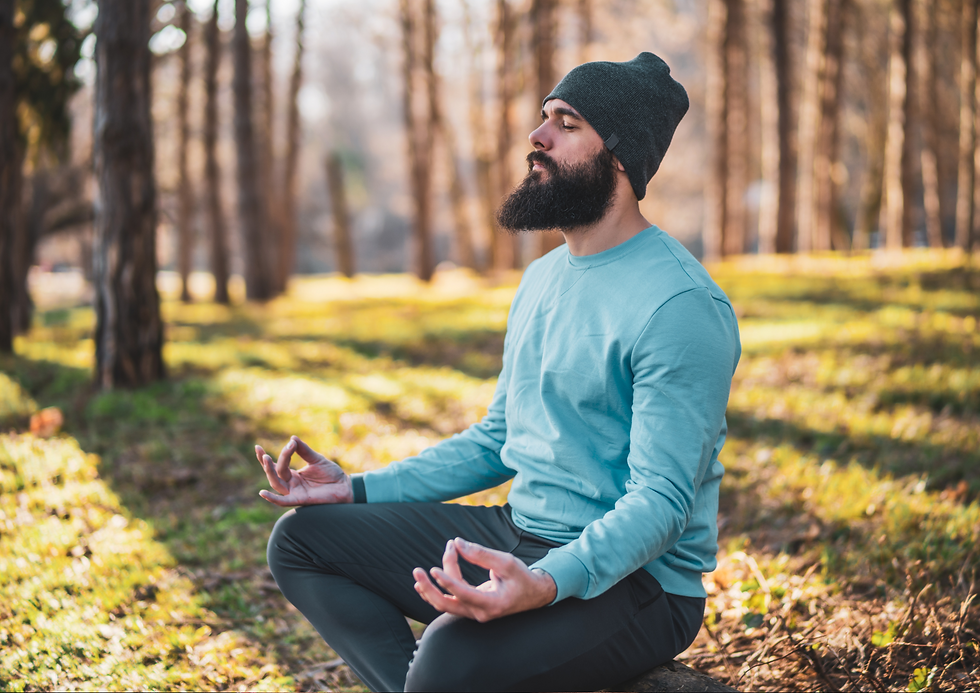

Have you ever caught yourself repeating the same habits or thought loops, even though you know they don’t serve you anymore? Whether it’s mindless scrolling, emotional eating, negative self-talk, or using substances to numb, these patterns can feel like they are hardwired.
But here's the empowering truth, your brain can change. And yoga is one of the most powerful tools to help that change become real, lasting, and embodied.
What Is Neuroplasticity?

Neuroplasticity refers to the brain’s ability to reorganize itself by forming new neural pathways and weakening old ones. Each time you repeat a thought, behavior, or emotional reaction, you strengthen the associated neural circuit.
This is how habits, and even addictions, form. But it’s also how they can be transformed.
According to research published in Nature Reviews Neuroscience, neuroplasticity is present across the entire lifespan, not just in children, and can be influenced by movement, attention, emotion, and intention (Lövdén et al., 2010).
Can You Erase a Neural Pathway?

Not exactly. Once a neural pathway exists, it doesn’t disappear completely. But here is what does happen:
Unused pathways weaken (a process called synaptic pruning)
New pathways can be formed, and with repetition and emotion, they become the brain’s new default
So rather than "erasing" an old habit, you override it by strengthening a new, healthier one.
Addiction Takes Many Forms

When we hear the word addiction, we often think of alcohol or drug use. But addiction is really about repetition without awareness, often driven by pain, avoidance, or disconnection.
Addiction can show up in many forms, such as:
Scrolling endlessly on social media
Emotional eating or bingeing
Workaholism or burnout cycles
Toxic relationship loops
Overthinking or obsessive self-criticism
Gambling, shopping, or gaming
These behaviors often create short-term relief, but long-term disconnection. And they are deeply wired into the brain's reward system, making them hard to break without conscious support.
Yoga & Addiction Recovery
Addiction isn’t simply a matter of willpower, it’s a neurobiological loop involving craving, compulsion, and reward. The brain’s dopamine system gets hijacked, reinforcing the behavior over and over again.
But there’s hope. A study in Frontiers in Psychiatry (2014) found that mindfulness-based approaches, including yoga and meditation, significantly reduced relapse rates and improved emotional regulation in people recovering from addiction.
These practices help rewire the brain’s reward pathways while reducing stress.
Yoga: A Tool for Rewiring Habits and Healing

Yoga offers a multidimensional approach to change, working through the body, breath, mind, and nervous system. Through mindfulness and presence, yoga teaches you to slow down and notice what’s happening within, your triggers, thoughts, emotions, and bodily cues, without judgment.
It supports the regulation of your nervous system; breathwork and gentle movement help calm the fight-flight-freeze response that often drives compulsive or addictive behaviors.
The practice of intention setting, known as sankalpa, allows you to plant purposeful affirmations during practice that begin to reshape your self-image and internal belief systems.
Most importantly, yoga helps restore a sense of embodiment and connection. Addiction and habitual patterns often leave us feeling disconnected or unsafe in our own bodies, yoga gently rebuilds trust, grounding you in presence, safety, and wholeness.
From Habit to Healing: A New Pathway
Here’s how to shift an old habit using yoga and neuroplasticity:
Awareness - Pause and notice the pattern, thought, or urge. This interrupts the loop.
Conscious Choice - Choose a new, aligned action such as breathing deeply, stepping into a posture, or repeating your sankalpa.
Repetition - Repeat this process often. New habits form through consistent practice.
Emotional Engagement - Let your new actions feel meaningful. Emotion helps lock the new pathway in place.
You Are Not Stuck

Even if you have repeated a behavior or thought pattern for years, you are never beyond healing. Your brain is always ready to grow. Yoga helps you become aware, choose again, and build something new, on the mat and in your life.
Every breath, every intention, every conscious pause is an invitation
to rewire your brain, to reconnect to your truth, to start again.
Your past doesn’t define you. Every breath is a new beginning.
References:
Lövdén, M. et al. (2010). Experience-dependent plasticity of white-matter microstructure extends into old age. Nature Reviews Neuroscience.
Garland, E. et al. (2014). Mindfulness-Oriented Recovery Enhancement for Addiction, Stress, and Pain. Frontiers in Psychiatry.
Khanna, S. & Greeson, J. M. (2013). A narrative review of yoga and mindfulness as complementary therapies in addiction treatment. Journal of Alternative and Complementary Medicine.
_edited_edited.png)























